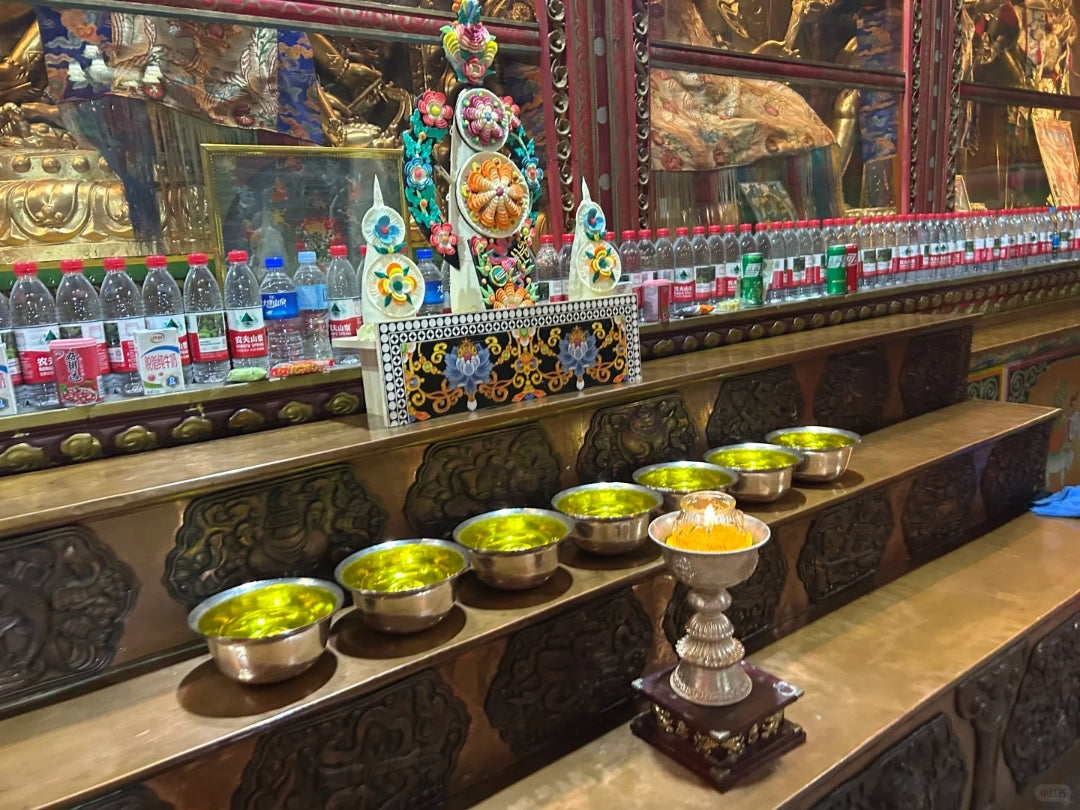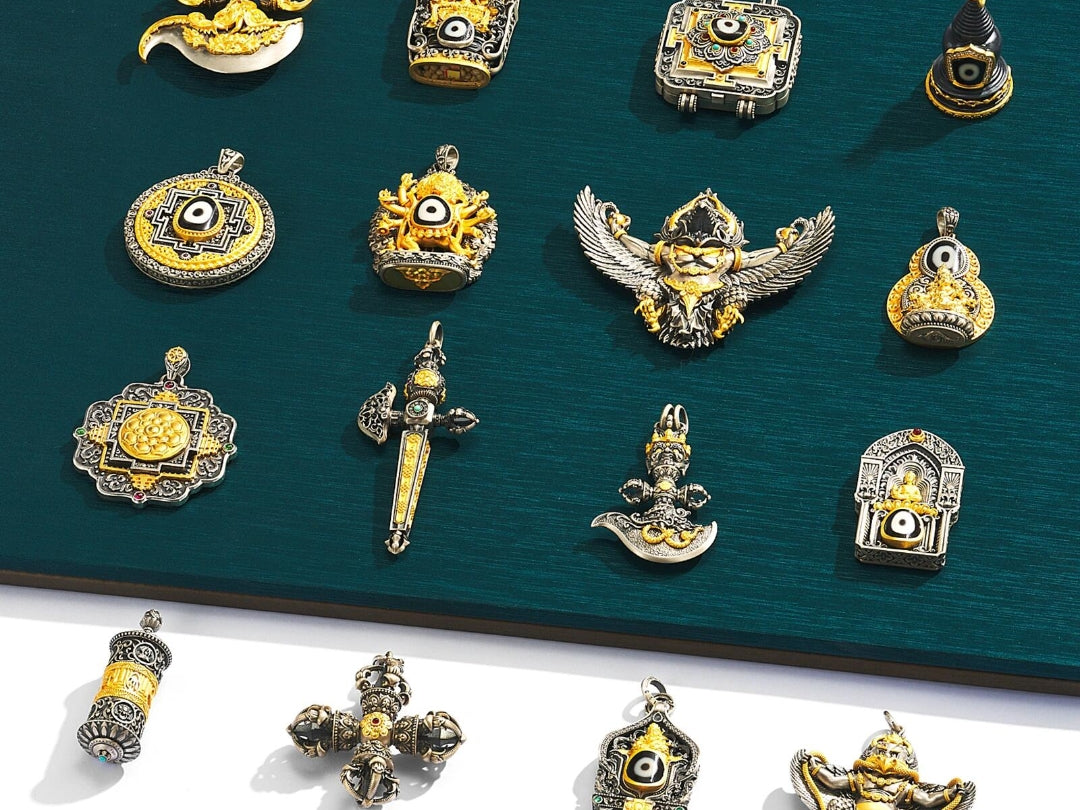Tibetan jewelry has always lived between worlds — devotional object, personal talisman, and work of fine craft. In recent decades museums, galleries, and contemporary designers have helped broaden how we see those pieces: no longer only artifacts behind glass, they’re also design references and living expressions of culture. This article looks at how museums exhibit and care for Tibetan jewelry, how contemporary artists and jewelers adapt sacred motifs, and what that means for collectors and everyday wearers who want to honor tradition responsibly.

Museums: framing ritual objects as art and history
Major museums have been treating Tibetan adornment not simply as ethnographic “costume” but as art with layered meanings. Curators place amulet boxes, ritual pendants, and gem-studded crowns alongside paintings and ritual objects to show how jewelry participates in practice — from pilgrimage to court ritual. Recent museum exhibitions dedicated to Himalayan ritual art and mandalas have included jewelry and gawu (amulet boxes) to help visitors understand the objects’ devotional contexts.
Showing jewelry brings practical challenges. Many Tibetan pendants combine metal, organic lacquer, painted pigment, and inlaid stones — a mixed-media condition that requires conservators to balance display, storage, and ethical handling. Museums with Himalayan collections now document materials, consult specialists, and sometimes limit light exposure or humidity to protect pigments and organic inlays. Those conservation workflows reveal how fragile and complex even a small amulet can be.
Conservation lessons for jewelers and owners
Museum conservation work is a useful guide for anyone who owns hand-painted gawu boxes or Thangka pendants. Common recommendations include limiting direct sunlight, avoiding prolonged humidity, and using soft, dry cloths rather than abrasive cleaners. For pieces with traditional mineral pigments or delicate polychrome paint, conservators often advise storage in acid-free boxes and careful environmental control — practical measures that help maintain both aesthetic and ritual value.
Contemporary artists and respectful adaptation
A new generation of artists and designers are translating Tibetan motifs into contemporary jewelry, balancing reverence with modern aesthetics. Some exhibit in galleries and museums that contextualize works — showing a pendant next to its Thangka source or a gawu beside a ritual text — while others present jewelry as wearable sculpture. Exhibitions focused on Himalayan jewelry and ritual objects make space for dialogue: how to display sacred motifs without stripping them of meaning, and how to credit source communities and techniques.
Good adaptations tend to follow a pattern: learn the symbolism (what the lotus, vajra, or mani syllable stands for), credit artisans and traditions, avoid trivializing sacred images, and preserve craft techniques rather than flattening them into trend motifs. Collaborations between contemporary designers and traditional workshops — or between galleries and Tibetan artisans — produce the most culturally grounded results.

From gallery to street: how motifs translate into wearables
When jewelers simplify Thangka or ritual motifs for daily wear, they make technical and ethical choices. Simplification might mean rendering a deity’s halo as a circular enamel disk, reducing a complex mandala into a geometric inlay, or encoding mantras as discreet engravings. Those choices affect how the piece reads: is it devotional jewelry, cultural jewelry, or purely decorative? Responsible designers are transparent about intention and origin so buyers can decide what role the object will play in their life.
Designers also consider materials and techniques. Where museums conserve fragile pigments, jewelers use durable enamels, stable metal alloys, and protected inlays so the piece survives daily wear while still evoking traditional color palettes and iconography.
Museums, markets, and the ethics of display
Three ethical threads keep coming up in museum and gallery practice — attribution, context, and consent. Attribution means naming makers and communities when possible. Context means explaining an object’s ritual function rather than presenting it as a mere “exotic” ornament. Consent involves working with source communities when displaying or reproducing sacred images. These practices help the public appreciate pieces as living culture, not frozen curios.
What collectors and wearers can do
If you’re drawn to Tibetan jewelry — whether in a museum, gallery, or boutique — here are practical, respectful steps:
-
Learn a bit about the symbol you’re buying (mani, vajra, lotus, etc.). Intent matters more than fashion.
-
Prefer pieces that disclose materials and maker details; provenance is meaningful.
-
Treat hand-painted or mixed-media items as delicate: avoid sunlight, store in a dry place, and follow conservation-style care notes.
-
Support ethical collaborations that favor fair pay and skills transmission in artisan communities.
-
If you’re wearing a deity image, do so with awareness and modesty — it’s a symbol of practice for many.
The cultural value: living tradition, not museum relic
Museums and galleries have done important work by exhibiting Tibetan jewelry in ways that highlight ritual use, material complexity, and artisan skill. At the same time, contemporary artists and responsible jewelers are translating motifs into daily objects that help keep traditions alive — provided those adaptations are grounded in research, credit, and respect. The result is a richer public conversation: these pieces are not just artifacts to admire behind glass, nor are they commodities to be stripped of meaning. They are expressions of faith, craft, and identity — and when treated with care, they can bridge museum showcases and everyday life.





